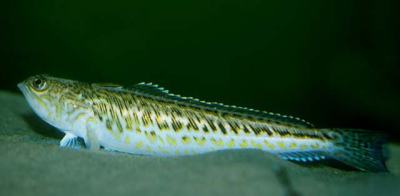The Environment Agency and the Zoological Society of London have uncovered a new species of fish in the tidal Thames – the Greater Weever – one of an astonishing 125 species of fish known to be found in the river.
The Greater Weever, a predatory fish, can grow to a length of half a metre and has venomous spines on its back and was discovered last week as part of a two year, joint monitoring programme looking at fish populations in the tidal Thames.
The new find will bring the total recorded number of fish species in the Thames Estuary up to a grand total of 125. The 125 species listed have been caught in the tidal Thames between Fulham and Tilbury since 1964. A number of the species listed are resident within the estuary, with others being considered occasional visitors or simply passing through into the freshwater Thames.
During this two year study over 60 species of fish have been recorded, including commercially important species such as Sole, Cod, Sea Bass and Thornback Ray. Unusual species such as the Short-Snouted Seahorse and John Dory have also been recorded. In addition, conservation species such as the Twaite Shad, European Eel and River Lamprey have been recorded.
 The Thames estuary is under huge pressures, including new development, dredging, cargo vessel traffic and commercial fishing. Data gathered by the Environment Agency and the Zoological Society of London from monitoring programmes such as this one provide vital information for detecting changes in fish populations.
The Thames estuary is under huge pressures, including new development, dredging, cargo vessel traffic and commercial fishing. Data gathered by the Environment Agency and the Zoological Society of London from monitoring programmes such as this one provide vital information for detecting changes in fish populations.
Environment Agency Fishery Officer Emma Barton said: “The diversity and abundance of fish is an excellent indicator of the health of the Thames estuary. Long-term monitoring provides us with vital information that helps shape the way we manage future development on the estuary.”
Matthew Gollock, Zoological Society of London’s Thames Conservation Project Manager, said: “Heavy pollution in the Thames estuary once left the waterway devoid of fish species. However, the discovery of this new species and the blossoming diversity of fish are hugely indicative of the renaissance of the estuary.
“The Zoological Society of London’s partnership with the Environment Agency will help us to understand much more about the distribution and behaviour of the many species and, in the long term, help us to maintain and conserve the estuary, and increase its biodiversity.”








